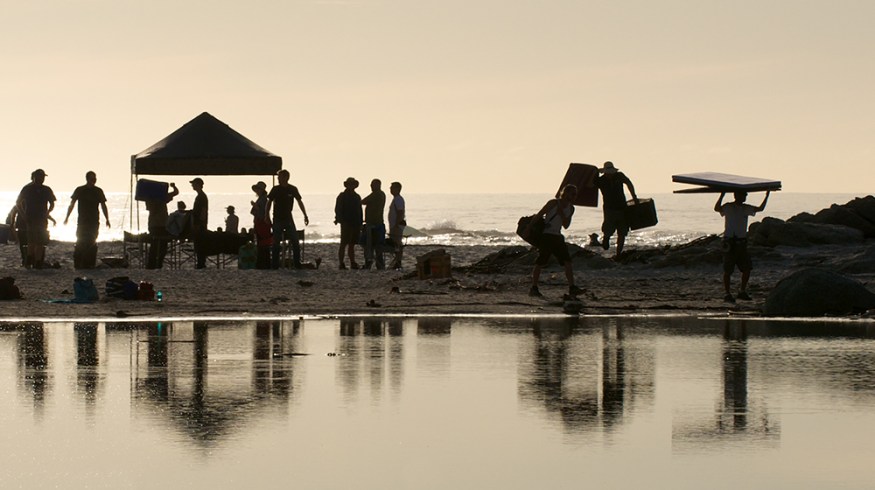
Understanding Tax Incentives in the Filmmaking Industry
Production incentives come in a variety of forms, depending on who’s offering them, so what are they, and what do they do?
Any good film or TV buff probably has a pretty decent grasp of the bigger American states for production these days. Scripts are expanding their locales — and thereby their stories. There is a single cause for this growth in the industry: state production incentives.
Production incentives come in a variety of formats and can bring some significant advantages to productions that qualify for them. So what are they, and what do they do?
(Over the past few years there has been a good amount of controversy over the benefits these incentives bring states. I won’t touch on that in this article, but the following information can help you wade into that discussion.)
A Brief History of Incentives in North America
By the ’90s, TV culture had spread across the globe, but few loved their TVs quite as much as Americans. There was a general fear in the American production industry about “runaway productions” — productions intended for American audiences but filmed in other countries where it is cheaper to produce content.
In 1997, this fear became reality when Canada introduced the world’s first production incentives. These incentives led to a surge of productions migrating to the North from the U.S. In 2001, Louisiana became the first U.S. state to adopt production incentives. This led to a substantial increase in productions in the state, with several gaining critical acclaim. Louisiana’s success with its incentive program led to implementation of similar incentives in other states. Today, more than half of U.S. states offer some form of production incentives.
What Are Production Incentives?

Image via Andrij Vatsyk
Simply put, production incentives are benefits offered by states to productions to entice them to produce a significant portion of their project in that state. Technically, all production benefits are classified as “MPI’s” — or Movie Production Incentives. Each one functions a little bit differently, but they all add value to productions — be it a simple cash payment or a free location.
Here are a few of the most common types of incentives.
-
Tax Credits
The terms “tax credit” and “tax rebate” are misnomers. The productions using these programs usually aren’t paying taxes in the states where they are claiming benefits — the states simply use the Department of Revenue to pay out their congressionally approved and allocated production spending programs.
Tax credits are basically tokens you can use against tax money you owe to the state. Most productions taking advantage of out-of-state incentives are LLCs that aren’t incorporated in the states where they’re shooting, which means the production usually won’t have any tax liability in the state where production occurred.
These tax credits still offer a massive advantage in most states, however. In all but two states where this incentive is available, the tax credits are transferable — meaning a production can sell them or exchange them for other goods or services to in-state companies or taxpayers who do owe taxes to the state in question.
-
Cash Rebates
Cash rebates are much simpler than tax credits. Cash rebates are straightforward payments from the state to production companies based on the amount of money and time spent shooting in the state.
-
Grants
Grants are cash awards given based on set criteria. Several states offer them, but the majority come through the federal government and private funds and foundations. Film Daily is a good starting point to get a feel for the grants available in the U.S.
-
Sales Tax Exemption and Lodging Exemption
Many states offer exemption to sales and lodging taxes to productions that qualify. These tax eliminations can save thousands over the course of a production.
-
Fee-Free Locations
Governments can also allow productions to film at state-owned locations free of charge.
With these benefits on offer by other states, it makes sense for productions to move from the traditional production states of New York and California. In addition to the lower general costs of production in smaller markets, many large productions view not shooting in these smaller markets as simply leaving money on the table. These incentives also offer a guaranteed return on investment to film financiers.
How to Qualify for Incentives?

Image via pui_bunny.
It’s clear why incentives are worth considering when planning a production. Before you start selecting a new state as the location for your next film, however, you need to understand the requirements and spending minimums necessary to secure state production incentives.
One important thing to remember is that all benefits vary by state. State representatives vote on how much to budget for production incentives each year. Even if your production meets all the requirements for incentives in the state where you want to shoot, there are no guarantees that there is still money in the coffers. You will need to contact the local film commission or similar entity to gauge how much money is available in the state funds.
Productions must meet a list of criteria to qualify. The most common types of these are as follows:
-
- Budget — All states have minimum budget requirements that productions must meet in order to qualify for benefits. These minimums range from tens to hundreds of thousands of dollars.
-
- Minimum spends — Minimum spends refer to the amount of money spent in state. Whereas budget requirements are in place largely to attract larger productions, minimum spends ensure that productions will inject enough money into the areas where they are shooting.
-
- Resident/non-resident labor — Many states require certain percentages of the crew to come from in-state talent pools. These percentages are usually 25-50 percent of the total crew.
-
- Percent of film shot in state — Most states require a certain percentage of the film to be made in the state. This is usually based on schedule days, but metrics might vary state by state.
Most states offering incentives will have film commissions set up to interact with producers. Some larger cities have them as well.
Film Production Capital has a pretty good list of incentives and requirements by state. There seems to be a bit of conflicting information across the net though, so check multiple sources to get a better feel. (If you are planning a project, nothing beats contacting the film commissions. They will help walk you through any questions you might have.)
There is no question that film incentives have had a massive effect on the North American production landscape. In the coming years, I hope to see any problems with the incentives worked out to more equitably benefit productions of all sizes. As productions spreads to new areas, so do the stories we tell.
Cover image via Neil Bradfield.
Looking for more film industry tips and tricks? Check out these articles.






